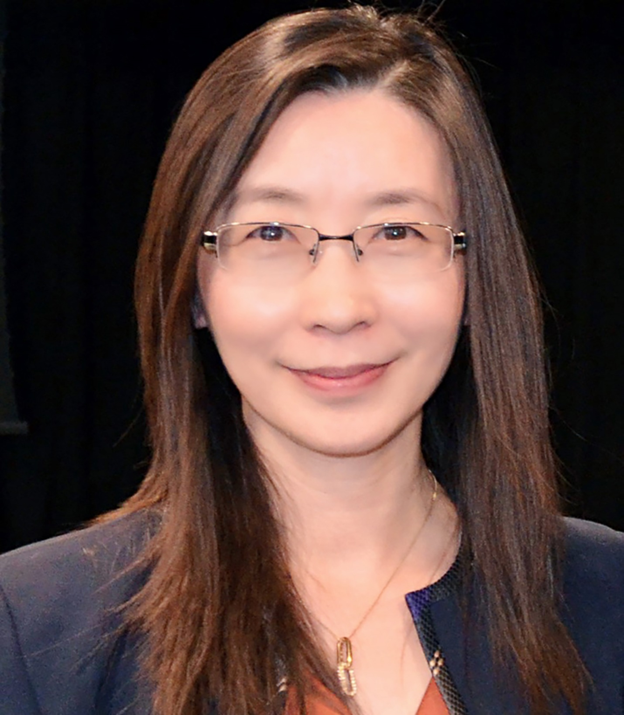Pushing the Boundaries of Nano-fabrication and Semiconductor Technology with Innovative Platforms
PUSHING THE BOUNDARIES OF NANO-FABRICATION AND SEMICONDUCTOR TECHNOLOGY WITH INNOVATIVE PLATFORMS
Abstract: Our group's research focuses on nanostructured semiconductor materials and devices, utilizing bottom-up MOCVD growth and top-down nanofabrication approaches to push the boundaries of semiconductor technology. Our goal is to create new device architectures that can transform the fields of electronics, photonics, quantum technologies, and potentially medicine.
In this talk, I will present two of our pioneering nanofabrication platforms that aim to address the increasing complexity in dimensional scaling and integration. Firstly, we developed an unorthodox anisotropic etching method, metal-assisted chemical etching (MacEtch), enabling damage-free fabrication of semiconductor nanostructures with unprecedentedly high aspect ratios and versatility for high-performance electronic and photonic devices. Some of the examples that I will use are MacEtch-enabled β-Ga2O3 FinFETs and damage-free microLEDs. Secondly, I will discuss our 3D self-rolled-up membrane (S-RuM) nanotechnology platform that has been used for extreme miniaturization of passive electronic components, such as inductors, transformers, and L-C resonators for radio frequency integrated circuits (RFICs). We believe that these innovative platforms hold the potential to unleash unprecedented levels of performance and functionality in semiconductor materials and devices.
Date and Time
Location
Hosts
Registration
-
 Add Event to Calendar
Add Event to Calendar
Loading virtual attendance info...
- Contact Event Host
- Co-sponsored by Electron Devices Society (ED15) - Northern Va Chapter
Speakers
Pro.Xuiling
Pushing the Boundaries of Nanofabrication and Semiconductor Technology with Innovative Platforms
Abstract: Our group's research focuses on nano-structured semiconductor materials and devices, utilizing bottom-up MOCVD growth and top-down nanofabrication approaches to push the boundaries of semiconductor technology. Our goal is to create new device architectures that can transform the fields of electronics, photonics, quantum technologies, and potentially medicine.
In this talk, I will present two of our pioneering nano-fabrication platforms that aim to address the increasing complexity in dimensional scaling and integration. Firstly, we developed an unorthodox anisotropic etching method, metal-assisted chemical etching (MacEtch), enabling damage-free fabrication of semiconductor nanostructures with unprecedentedly high aspect ratios and versatility for high-performance electronic and photonic devices. Some of the examples that I will use are MacEtch-enabled β-Ga2O3 FinFETs and damage-free microLEDs. Secondly, I will discuss our 3D self-rolled-up membrane (S-RuM) nanotechnology platform that has been used for extreme miniaturization of passive electronic components, such as inductors, transformers, and L-C resonators for radio frequency integrated circuits (RFICs). We believe that these innovative platforms hold the potential to unleash unprecedented levels of performance and functionality in semiconductor materials and devices.
Biography:
Biography: Xiuling Li received her B.S. degree from Peking University and Ph.D. degree from the University of California at Los Angeles. Following post-doctoral positions at California Institute of Technology and University of Illinois, as well as industry experience at II-VI, Inc. (formerly EpiWorks, Inc.), she joined the faculty of the University of Illinois, Urbana-Champaign (UIUC) in 2007. At UIUC, she was the Donald Biggar Willett Professor in Engineering and the interim director of the Nick Holonyak Jr. Micro and Nanotechnology Laboratory. She joined the faculty of the University of Texas at Austin in Aug. 2021. She holds the Temple Foundation Endowed Professorship in Department of Electrical and Computer Engineering. She also has an affiliate appointment in Chemistry as the Fellow of the Dow Professorship.
Her research focuses on nanostructured semiconductor materials and devices. She has published >170 journal papers and holds >25 patents, delivered > 150 invited lectures worldwide. She has been honored with the NSF CAREER award, DARPA Young Faculty Award, and ONR Young Investigator Award, and the IEEE Pioneer Award in Nanotechnology. She is a Fellow of the IEEE, the American Physics Society (APS), the Optical Society (OSA), the National Academy of Inventors (NAI), and the American Association for the Advancement of Science (AAAS). Among her services to professional societies, she was the VP of Finance and Administration and an elected member of the board of governors of IEEE Photonics Society, and the fellow evaluation committee of IEEE Electron Device Society and IEEE Nanotechnology Council, IEEE Andrew Grove award committee chair, and the executive committee of APS Division of Materials Physics. She has been a Deputy Editor of Applied Physics Letters since 2015.
Address:Department of Electrical and Computer Engineering The University of Texas at Austin, , Austin, Texas
Agenda
- Date: 23 Apr 2025
- Time: 06:30 PM EDT to 08:00 PM EDT


